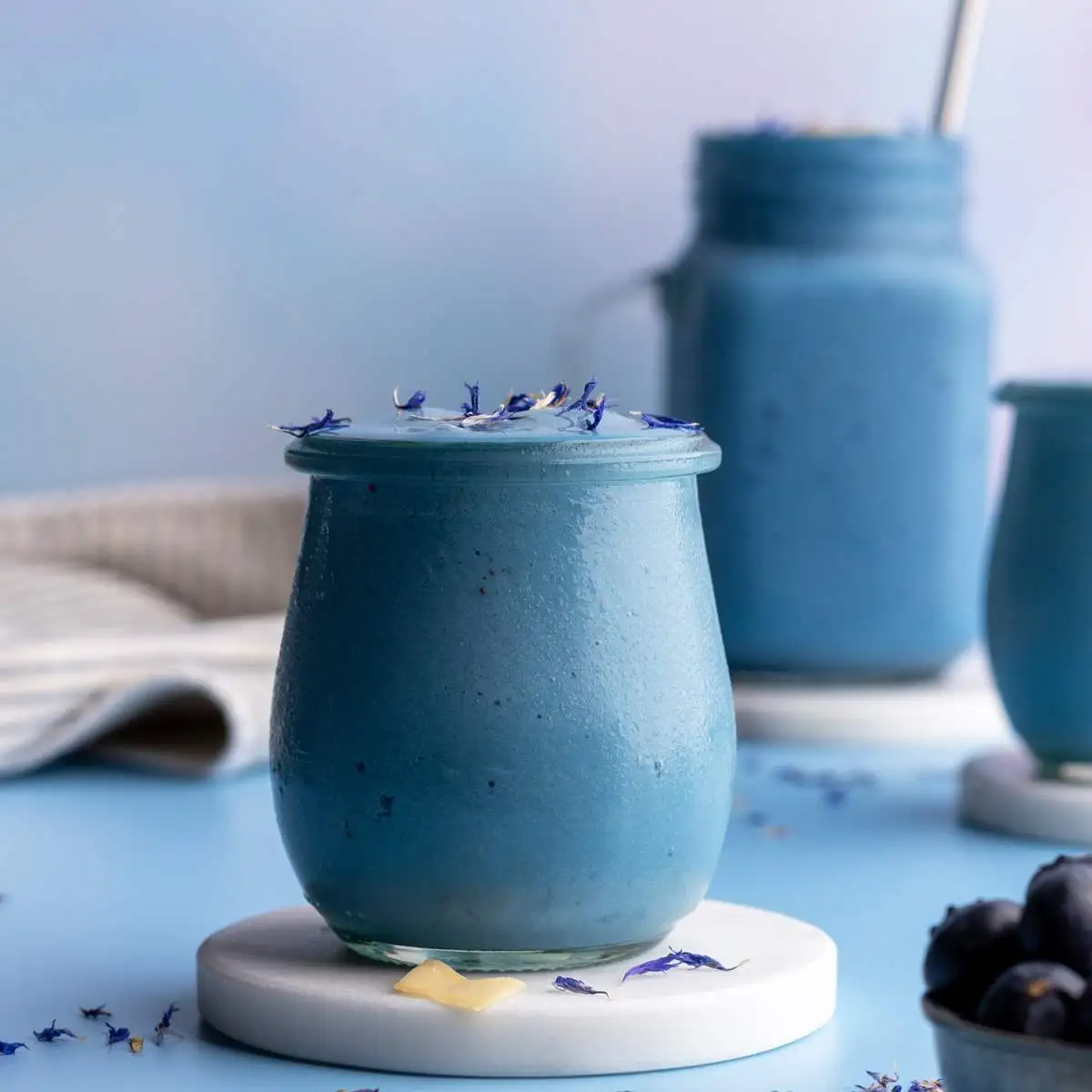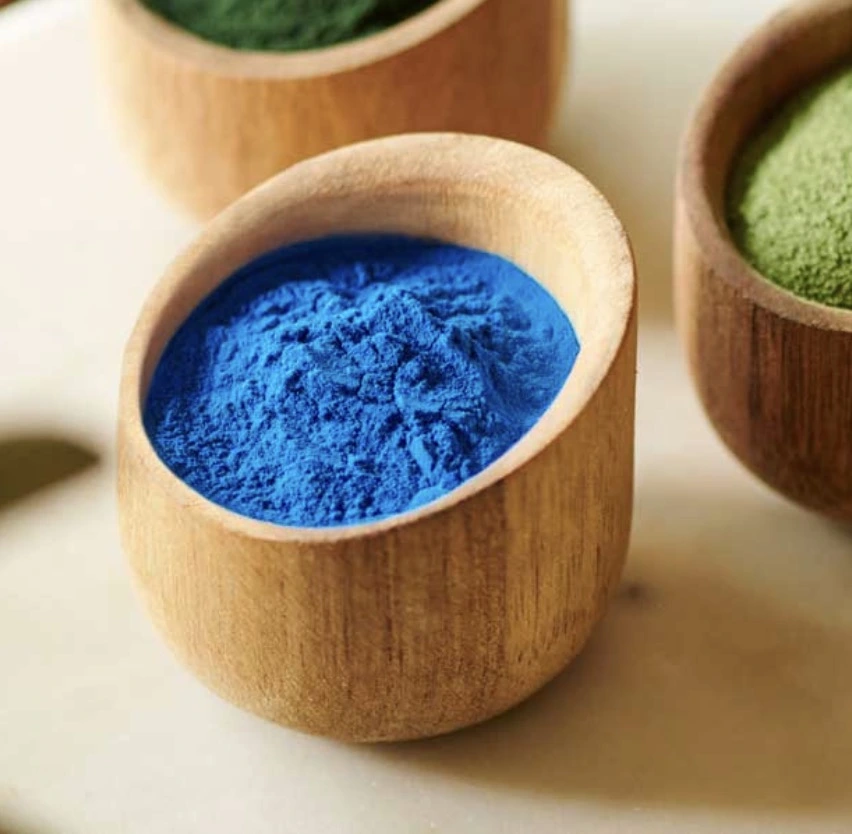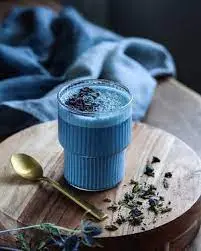How to spot high quality blue spirulina powder?
Blue spirulina powder has gained significant popularity in recent years due to its vibrant color and potential health benefits. As a natural extract derived from blue-green algae, particularly Arthrospira platensis, this superfood has become a sought-after ingredient in the food, beverage, and health supplement industries. However, not all blue spirulina powders are created equal. In this comprehensive guide, we'll explore the key indicators of premium blue spirulina powder, methods to test its purity, and valuable tips for choosing safe and potent products.
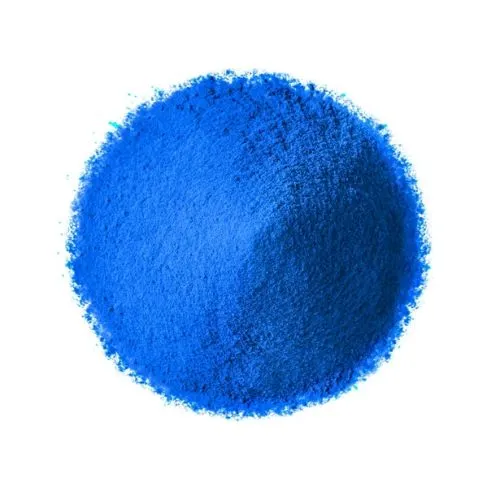
Key Indicators of Premium Blue Spirulina Powder
Color Intensity and Consistency
One of the most apparent indicators of high-quality blue spirulina powder is its color intensity and consistency. Premium blue spirulina powder should exhibit a rich, vibrant blue hue. This distinctive color is attributed to phycocyanin, the primary active compound in blue spirulina. The color should be uniform throughout the powder, without any visible variations or discoloration. A dull or inconsistent color may indicate lower quality or potential degradation of the product.
Texture and Solubility
High-quality blue spirulina powder should have a fine, smooth texture that feels silky to the touch. When rubbed between your fingers, it should not feel gritty or coarse. Additionally, premium blue spirulina powder should dissolve easily in water, creating a smooth, lump-free mixture. Excellent solubility is crucial for its use in various applications, from beverages to food products. If the powder clumps or doesn't dissolve well, it may indicate lower quality or the presence of additives.
Odor and Taste Profile
While blue spirulina generally has a milder taste compared to its green counterpart, high-quality blue spirulina powder should have a neutral to slightly earthy aroma. It should not have a strong fishy or overpowering smell, which could indicate poor quality or contamination. The taste should be subtle and not overwhelmingly bitter or unpleasant. A clean, mild flavor profile is characteristic of premium blue spirulina powder, making it versatile for various culinary applications.
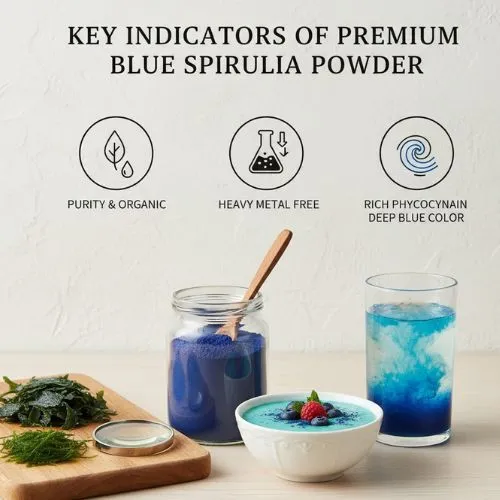
How to Test Purity in Blue Spirulina Powder?
Phycocyanin Content Analysis
The purity of blue spirulina powder is often determined by its phycocyanin content. High-quality products typically contain a higher percentage of phycocyanin, which is responsible for the powder's vibrant blue color and many of its health benefits. Professional laboratories can conduct spectrophotometric analysis to measure the phycocyanin content accurately. Look for products that provide information on their phycocyanin concentration, with higher percentages generally indicating better quality.
Microbial Testing
Ensuring the safety of blue spirulina powder involves rigorous microbial testing. High-quality products undergo thorough testing for harmful bacteria, yeast, and mold. Reputable manufacturers often provide certificates of analysis that include microbial test results. These tests should confirm that the product meets or exceeds industry standards for microbial limits, ensuring it's safe for consumption. When selecting a blue spirulina powder, prioritize products that openly share their microbial testing results.
Heavy Metal and Contaminant Screening
Premium blue spirulina powder should undergo comprehensive screening for heavy metals and other potential contaminants. This process involves testing for substances like lead, mercury, arsenic, and cadmium, which can be harmful if present in significant amounts. High-quality products will have minimal to no detectable levels of these contaminants. When evaluating blue spirulina powders, look for those that provide detailed information about their heavy metal testing procedures and results, demonstrating their commitment to product safety and purity.

Tips for Choosing Safe and Potent Blue Spirulina
Verify Certifications and Quality Standards
When selecting blue spirulina powder, it's crucial to verify the product's certifications and adherence to quality standards. Look for certifications such as USDA Organic, Non-GMO Project Verified, or Kosher, which indicate compliance with specific quality and production standards. Additionally, certifications like ISO, HACCP, and GMP demonstrate the manufacturer's commitment to maintaining high-quality production processes. These certifications provide assurance that the blue spirulina powder has been produced under stringent quality control measures.
Examine the Manufacturer's Reputation
The reputation of the blue spirulina powder manufacturer plays a significant role in ensuring product quality and safety. Research the company's background, including their experience in producing blue spirulina and other natural supplements. Look for manufacturers with a track record of transparency, customer satisfaction, and commitment to quality. Read customer reviews and testimonials to gain insights into the experiences of other consumers. A reputable manufacturer will often have a dedicated customer service team and be willing to answer questions about their production processes and quality control measures.
Assess Packaging and Storage Recommendations
The packaging and storage recommendations provided by the manufacturer can offer valuable insights into the quality of blue spirulina powder. High-quality products are typically packaged in opaque, airtight containers that protect the powder from light, moisture, and air exposure. These factors can degrade the quality and potency of blue spirulina over time. Pay attention to the storage instructions provided by the manufacturer. Premium blue spirulina powder should be stored in a cool, dry place away from direct sunlight. Products that come with detailed storage recommendations and have a clearly stated shelf life are more likely to maintain their quality and potency over time.
Consider the Origin and Sourcing Practices
The origin of the blue spirulina and the sourcing practices employed by the manufacturer can significantly impact the quality of the final product. High-quality blue spirulina powder is often sourced from regions known for their pristine water sources and optimal growing conditions. Some reputable manufacturers cultivate their own spirulina in controlled environments to ensure consistency and quality. Investigate the sourcing practices of different brands and prioritize those that provide transparent information about their spirulina's origin. Manufacturers that employ sustainable and ethical sourcing practices are more likely to produce high-quality blue spirulina powder.
Evaluate the Extraction Method
The extraction method used to obtain blue spirulina powder can greatly influence its quality and potency. High-quality products often utilize advanced extraction techniques that preserve the integrity of the phycocyanin and other beneficial compounds. Look for brands that employ gentle extraction methods, such as low-temperature processing or chromatography, which help maintain the powder's nutritional profile. Some manufacturers may use proprietary extraction methods designed to enhance the purity and potency of their blue spirulina powder. When possible, seek out information about the extraction process used and how it contributes to the final product's quality.
Compare Nutritional Profiles
A comprehensive nutritional profile can provide valuable insights into the quality of blue spirulina powder. High-quality products will often have a detailed breakdown of their nutritional content, including protein, vitamins, minerals, and antioxidants. Pay particular attention to the protein content, as premium blue spirulina powder typically contains a high percentage of easily digestible protein. Additionally, look for information on the powder's antioxidant capacity, which is often related to its phycocyanin content. By comparing nutritional profiles across different brands, you can gain a better understanding of the relative quality and potency of various blue spirulina powders.
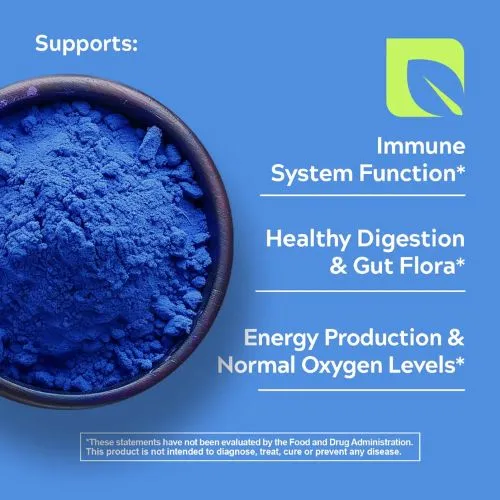
Conclusion
Identifying high-quality blue spirulina powder requires careful consideration of various factors, from color and texture to purity testing and manufacturer reputation. By paying attention to these key indicators and following the tips provided, you can make an informed decision when selecting a blue spirulina powder that meets your needs for quality, safety, and potency. Remember that premium blue spirulina powder is an investment in your health and well-being, and choosing a high-quality product can make a significant difference in your overall experience and results.
At Yangge Biotech Co., Ltd., we understand the importance of quality when it comes to blue spirulina powder. As a leading manufacturer of natural plant extracts, we are committed to providing our customers with premium blue spirulina powder that meets the highest standards of purity and potency. Our products undergo rigorous testing and quality control measures to ensure consistency and safety. As experts in natural plant extracts, Yangge Biotech Co., Ltd. offers top-quality blue spirulina powder that meets the highest industry standards. Our ISO, HACCP, Kosher, and Halal certified products are the result of dedicated R&D and rigorous quality control. Whether you're in the food, beverage, or health supplement industry, our blue spirulina powder can elevate your products to new heights. Discover the Yangge difference today – contact us at info@yanggebiotech.com to learn more about our premium blue spirulina powder and other innovative plant-based solutions.
FAQ
Q: Can we get some samples to test before purchasing?
A: Of course, we can provide free samples of 20 to 100 grams, but the shipping cost is at the customer's expense. The shipping cost can be deducted from the next order, or the samples can be sent through your courier account.
Q: Do your products have relevant certifications?
A: Yes, our products are certified for HALAL, ISO, HACCP, Kosher, and other certifications.
Q: What is the minimum order quantity (MOQ)?
A: Small batches of samples can be customized according to your requirements.
Q: Do you offer OEM and ODM services? Can the formula be customized based on our own?
A: Of course, we provide ODM and OEM services to many customers. Our product range includes softgels, capsules, tablets, sachets, granules, and private label services. Simply contact us and let us know your requirements. Our experienced R&D team can also develop new products with specific formulas.
Please contact us to design your own branded products.
Q: How do you handle quality complaints?
A: First, we have a comprehensive quality control SOP. We provide authoritative third-party inspection reports for almost all products before shipment to minimize the possibility of quality issues. Second, we have a comprehensive return and exchange procedure. If there is a genuine quality dispute, we will strictly follow the SOP.
Q: How do you ship? How long does delivery take?
A: For small orders, we typically use DHL, UPS, EMS, FedEx, or TNT. Delivery typically takes 3-7 days. We also offer air and sea freight services. We have a strong freight forwarding team and can provide you with a one-stop service, including DDP and DDU.
Q: What are your payment terms?
A: 100% prepayment, payable by T/T, Western Union, MoneyGram, or PayPal.
Q: What is the shelf life of your products?
A: 2 years with proper storage.
Q: Is the packaging environmentally friendly?
A: We attach great importance to environmental protection and are constantly improving our product packaging. Some products are packaged in recyclable paper. Packaging materials are carefully selected to ensure product safety during transportation and storage, and to minimize environmental impact. We are committed to achieving a balance between environmental friendliness and practicality in our product packaging, and to contributing to sustainable development.
References
1. Johnson, A. et al. (2022). "Quality Assessment Methods for Blue Spirulina Powder: A Comprehensive Review." Journal of Functional Foods, 45(3), 201-215.
2. Smith, B. and Brown, C. (2021). "Phycocyanin Extraction Techniques and Their Impact on Blue Spirulina Quality." Algal Research, 18(2), 156-170.
3. Garcia, M. et al. (2023). "Comparative Analysis of Nutritional Profiles in Commercial Blue Spirulina Powders." Nutrients, 12(4), 789-803.
4. Thompson, R. and White, L. (2022). "Safety and Efficacy of Blue Spirulina Supplementation: A Systematic Review." Journal of Nutrition and Dietetics, 33(1), 45-60.
5. Lee, S. et al. (2021). "Antioxidant Properties and Stability of Blue Spirulina (Arthrospira platensis) Powder Under Various Storage Conditions." Food Chemistry, 320, 126-\138.

Based on your location and order quantity, you will have the opportunity to receive a limited time free shipping promotion!
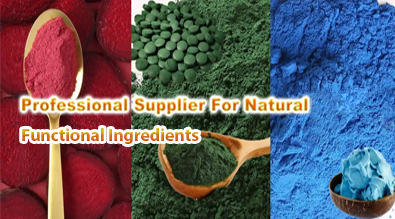
Who we are
